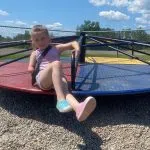
Radon gas: A deadly but misunderstood issue for Albertans
MEDICINE HAT, AB – Radon is an odourless, colourless, radioactive gas with Canadians having some of the highest levels of exposure to on the planet and the prairies some of the most in the country.
It’s an issue Medicine Hat resident Linda Cleveland says she hopes to raise awareness of after her niece was diagnosed with lung cancer suspected to have been caused by exposure to radon gas while living in Regina and Saskatoon.
“It has personally touch our family. I have a 41-year-old niece in Saskatoon who about eight months ago couldn’t seem to get rid of a persistent cough and after several prescriptions and diagnostic tests was diagnosed with stage-two lung cancer,” said Cleveland.

